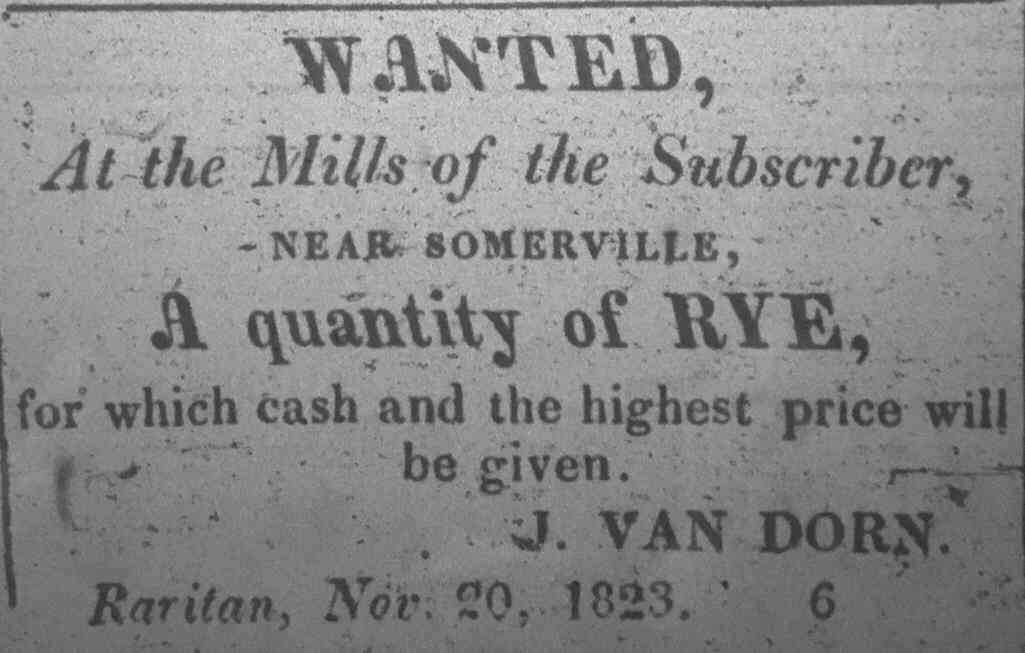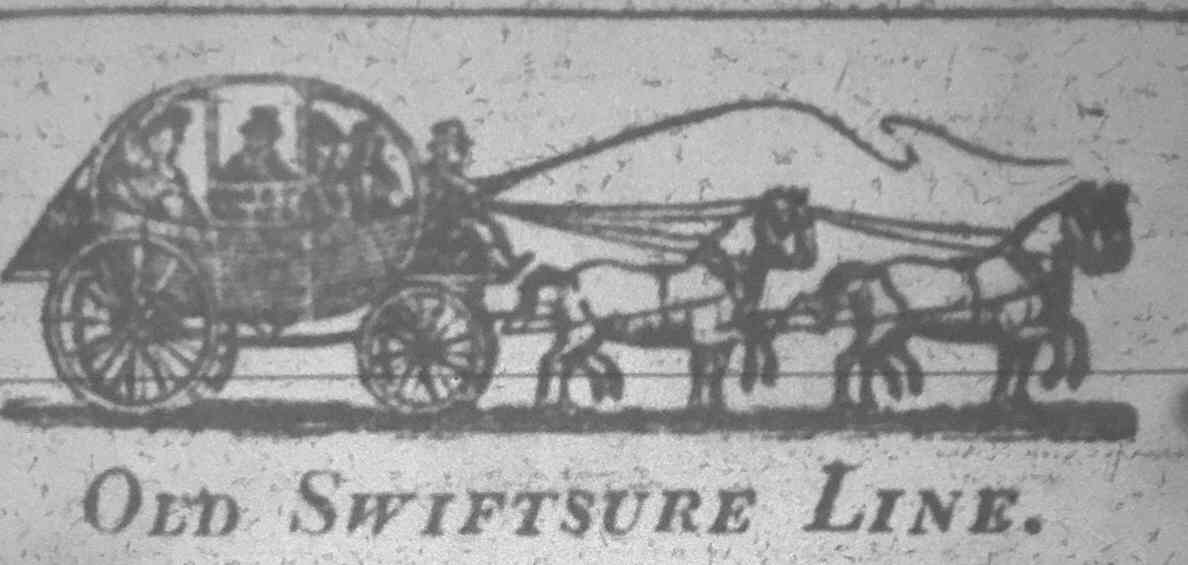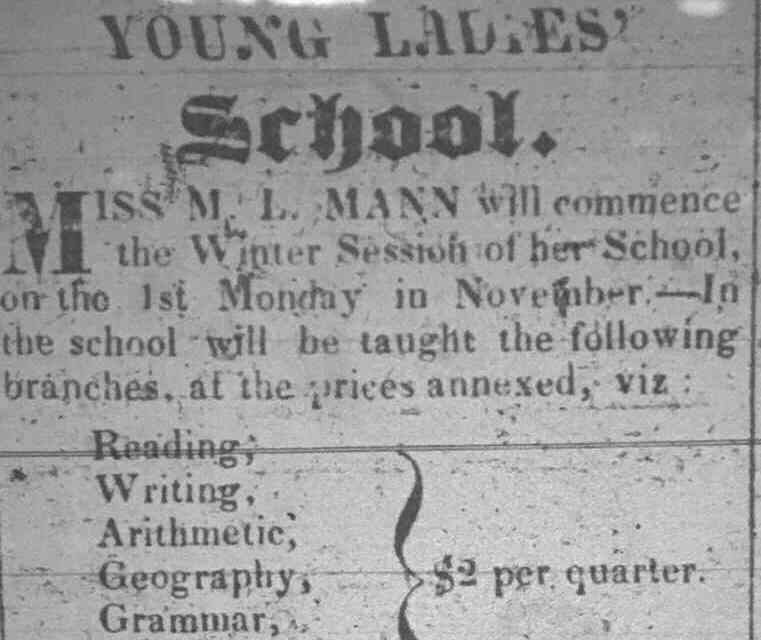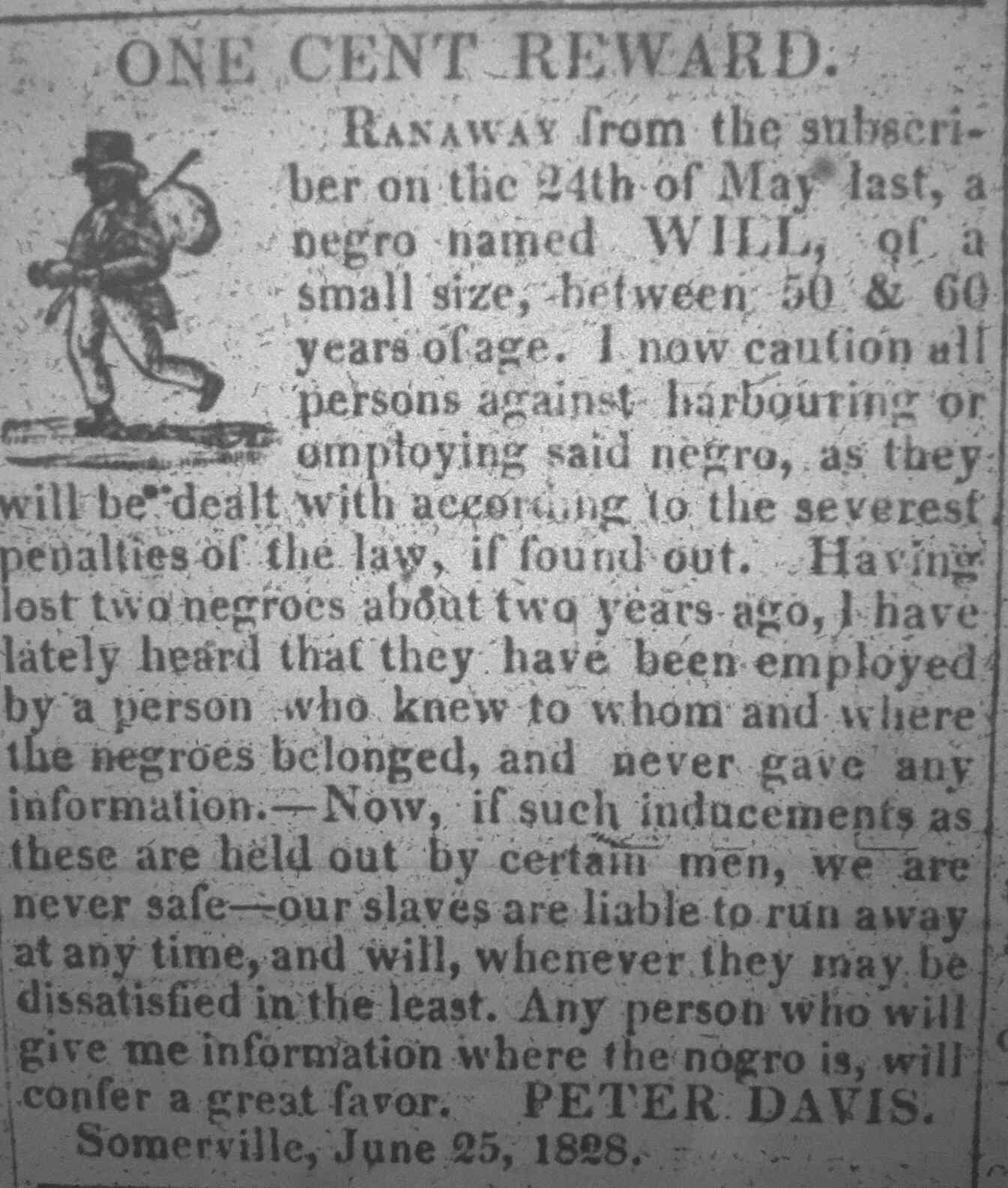

To help distribute the newspaper outside of Somerville they promised that post riders would be employed to carry the paper. The first issues consisted of 4 pages each. Cost would be $2 a year.

The Somerville Post Office, the first in Somerset County, had just been established the year before. Many important men who had influence throughout New Jersey were now living in the area.

One ad is for a dentist who is informing people that he will be coming to Somerville on a particular day. He states that he will be cleaning teeth without much discomfort. He then lists the names of many of his satisfied customers.
A weekly feature was a chart with the then all-important current Farm Prices - Flour, Rye, Butter, Lard, Cider, and Eggs. A lot of the local land was used for farming as Somerset County had very fertile soil. It is interesting to note that any real estate for sale had large plots of land (20 acres plus) with it.

Another column that appeared in each issue was a list of letters that had not yet been picked up at the post office. Mail was not delivered to the home, just to the local post office.
The fact that a good deal of “law and order” was still in the hands of the people is apparent in the newspaper. One article tells of a meeting of citizens to establish “The Somerville Society to Prevent Thief”. It was horses that were the big target of thieves. Another short advertisement taken out by a farmer states that no one is to trespass on his property. He warns that anyone who does will be dealt with.

As for transportation, this was a decade before the railroad emerged. Traveling was mostly by horse and buggy. There was a prominent travel company called the “Sure Swift Stage Line” that appeared in each issue. They had coaches going in both directions between Philadelphia and New York. There were many stops along the route including Somerville. One other company ran the popular “Somerville and New Brunswick Coach”. New Brunswick was then a town of great importance. It is mentioned quite often throughout the newspaper. The fee to travel one way was 50 cents. This regular coach went a couple times a day.
Once in New Brunswick if one wanted to go to New York City there was a ferry boat that would leave once a day for the city. It also made a return trip once a day.

While the Academy was a good school, it was only for boys. Girls were not allowed. Their only chance to go to school could be seen in an ad for “Miss Mann’s Young Ladies School” which was in Morristown. The costs were advertised. To learn reading, writing, and arithmetic was $2 for the semester.

Slave owners would place ads offering a reward for their runaway slaves. Most of these ads also served warning that no one should be helping the runaways.
Slavery then was slowly dying out in New Jersey. The 1820 census showed that in Somerset County 6.7% of the population were slaves with 57% of blacks being free. By 1830 the census showed that slaves made up 2.9% of the population with 80% of blacks being free. While some laws had been passed to gradually abolish slavery in New Jersey the decrease was mostly due to the long overdue rising morality that slavery was wrong which resulted in the slave owners feeling pressure to free their slaves.

Another section would give the latest news from Europe. With any international news the timeliness of it was always stated. It would say that a ship, which had taken so many days (usually around 24 days) to across the Atlantic from Europe, had arrived with foreign newspapers of a particular date. Information traveled slowly in 1823.